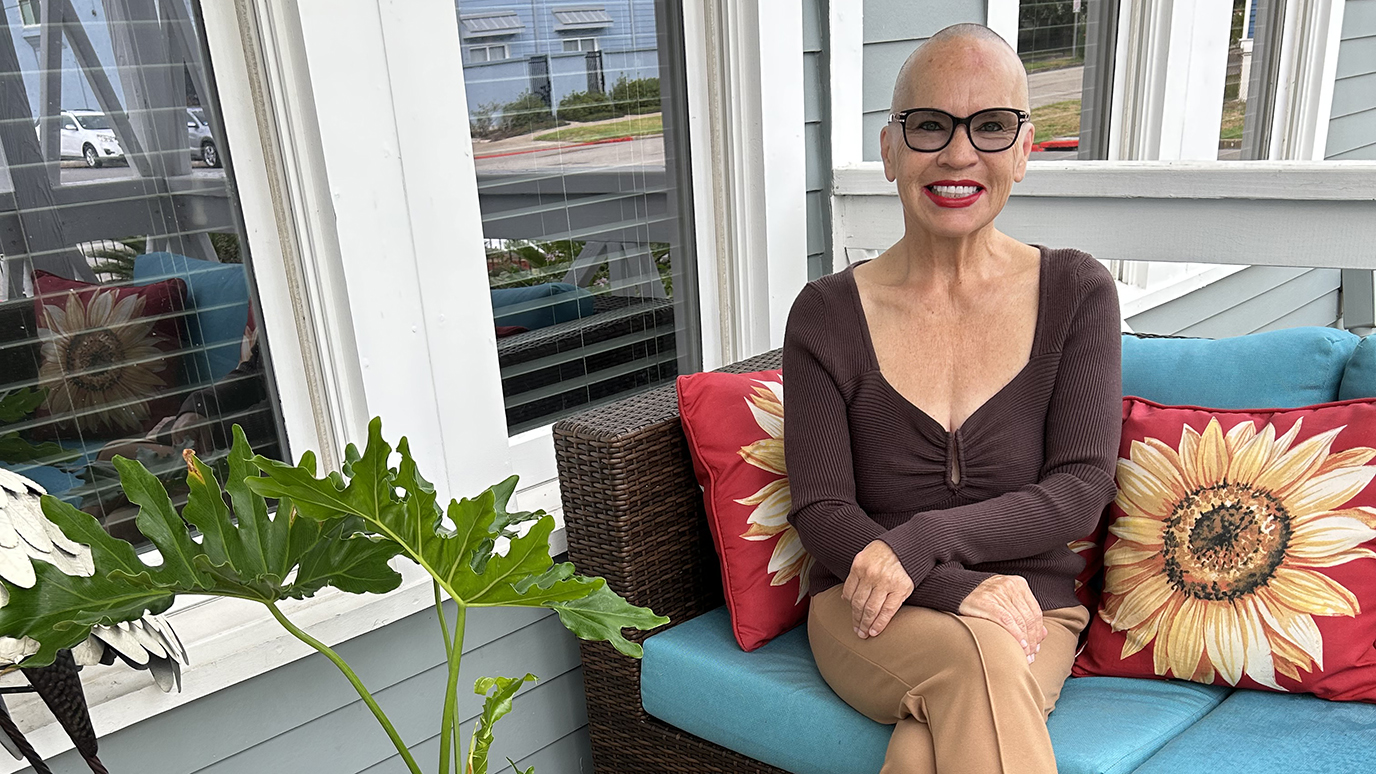- Diseases
- Acoustic Neuroma (14)
- Adrenal Gland Tumor (24)
- Anal Cancer (68)
- Anemia (2)
- Appendix Cancer (16)
- Bile Duct Cancer (26)
- Bladder Cancer (72)
- Brain Metastases (28)
- Brain Tumor (230)
- Breast Cancer (720)
- Breast Implant-Associated Anaplastic Large Cell Lymphoma (2)
- Cancer of Unknown Primary (4)
- Carcinoid Tumor (8)
- Cervical Cancer (158)
- Colon Cancer (166)
- Colorectal Cancer (114)
- Endocrine Tumor (4)
- Esophageal Cancer (44)
- Eye Cancer (36)
- Fallopian Tube Cancer (8)
- Germ Cell Tumor (4)
- Gestational Trophoblastic Disease (2)
- Head and Neck Cancer (8)
- Kidney Cancer (128)
- Leukemia (344)
- Liver Cancer (50)
- Lung Cancer (288)
- Lymphoma (284)
- Mesothelioma (14)
- Metastasis (30)
- Multiple Myeloma (100)
- Myelodysplastic Syndrome (60)
- Myeloproliferative Neoplasm (4)
- Neuroendocrine Tumors (16)
- Oral Cancer (100)
- Ovarian Cancer (174)
- Pancreatic Cancer (164)
- Parathyroid Disease (2)
- Penile Cancer (14)
- Pituitary Tumor (6)
- Prostate Cancer (146)
- Rectal Cancer (58)
- Renal Medullary Carcinoma (6)
- Salivary Gland Cancer (14)
- Sarcoma (238)
- Skin Cancer (296)
- Skull Base Tumors (56)
- Spinal Tumor (12)
- Stomach Cancer (64)
- Testicular Cancer (28)
- Throat Cancer (92)
- Thymoma (6)
- Thyroid Cancer (96)
- Tonsil Cancer (30)
- Uterine Cancer (80)
- Vaginal Cancer (16)
- Vulvar Cancer (20)
- Cancer Topic
- Adolescent and Young Adult Cancer Issues (20)
- Advance Care Planning (10)
- Biostatistics (2)
- Blood Donation (18)
- Bone Health (8)
- COVID-19 (362)
- Cancer Recurrence (120)
- Childhood Cancer Issues (120)
- Clinical Trials (632)
- Complementary Integrative Medicine (24)
- Cytogenetics (2)
- DNA Methylation (4)
- Diagnosis (232)
- Epigenetics (6)
- Fertility (62)
- Follow-up Guidelines (2)
- Health Disparities (14)
- Hereditary Cancer Syndromes (126)
- Immunology (18)
- Li-Fraumeni Syndrome (8)
- Mental Health (118)
- Molecular Diagnostics (8)
- Pain Management (62)
- Palliative Care (8)
- Pathology (10)
- Physical Therapy (18)
- Pregnancy (18)
- Prevention (914)
- Research (398)
- Second Opinion (74)
- Sexuality (16)
- Side Effects (608)
- Sleep Disorders (10)
- Stem Cell Transplantation Cellular Therapy (216)
- Support (402)
- Survivorship (322)
- Symptoms (184)
- Treatment (1790)
How is ovarian cancer treated?
6 minute read | Published March 03, 2023
Medically Reviewed | Last reviewed by an MD Anderson Cancer Center medical professional on March 03, 2023
One reason ovarian cancer often comes with a poor prognosis is that the disease is not usually diagnosed until it’s already in the latter stages. That means the cancer has already spread beyond the ovaries and into the upper abdomen or chest cavity.
Another reason is that ovarian cancer has a high rate of recurrence — and, until recently, there were no effective treatment options to offer patients whose ovarian cancer had returned.
But that may soon be changing, thanks to new insights gleaned from clinical trials and the study of patients with minimal residual disease (MRD), as well as a fresh look at an old diagnostic surgical procedure and an ongoing collaboration with Break Through Cancer. We spoke with gynecologic oncologist Amir Jazaeri, M.D., for details.
How is ovarian cancer typically treated?
Right now, the first line of treatment for high-grade serous ovarian cancer — the most common type of ovarian cancer — involves some combination of surgery and chemotherapy.
Patients who don’t have much disease will typically have surgery first, followed by about six rounds of chemotherapy.
Patients who are sicker or have more advanced disease will start with a few rounds of chemotherapy to shrink the tumors, then pause to have surgery, and then have a few more rounds of chemotherapy afterward.
How do genetic mutations like BRCA or HRD affect someone’s treatment plan?
A person’s BRCA (breast cancer gene) or HRD (homologous recombination deficiency) status won’t change their initial chemotherapy drugs. But it does affect the type of maintenance therapy they receive afterward.
Patients who test positive for BRCA or HRD, for example, are known to benefit from PARP inhibitors, a type of oral targeted therapy. So, maintenance therapy for an ovarian cancer patient with one of those known mutations would likely include a PARP inhibitor.
How has the treatment of ovarian cancer changed over the years?
Unfortunately, neither the trajectory of the disease itself nor its treatment has changed significantly over the past four decades.
Most patients can achieve remission initially with the combination of surgery and chemotherapy. The problem is that ovarian cancer almost always comes back because there’s minimal residual disease, or microscopic amounts of cancer remaining in the body that are too small for our current scans and tests to pick up.
We still use essentially the same chemotherapy drugs today that we’ve used since the late 1980s or early 1990s: carboplatin and paclitaxel. Because of this, most study efforts focus on either adding one or more drugs to this combination or adding drug(s) that can be continued beyond the usual six cycles of chemotherapy and used as a maintenance therapy.
Unfortunately, while we can sometimes delay a cancer recurrence, thus far, those strategies have not increased cure rates. So, that’s the status quo we’re trying to change.
What are the latest developments in the diagnosis and treatment of ovarian cancer?
About four years ago, we began offering patients something called second-look laparoscopy again. It was used back in the 1980s and early ‘90s to find minimal residual disease in patients who’d just completed their initial treatments.
The problem was, even though the procedure proved effective at identifying MRD early, it didn’t lead to greater overall survival rates. That’s because we didn’t have any other effective treatments to offer our patients then. It didn’t make sense to keep looking for MRD if we had no new tools to fight it — especially since, at that time, it involved another major open abdominal surgery. So, the practice was abandoned.
Now, fast forward 40 years, and our group has started to reconsider its usefulness. What’s different today is that the second-look laparoscopy can be performed much more safely, as a minimally invasive, outpatient procedure. Patients can have it done and go home on the same day.
We also have many more (and continually expanding) biologics, hormone therapies, targeted therapies and immunotherapies available now. So, we thought it would be wise to revisit this tool and see if we could make a positive impact on these patients while the number of cancer cells in their bodies is at its lowest level.
Which ovarian cancer patients should get a second-look laparoscopy?
We currently don’t recommend second-look laparoscopy because the data isn’t quite sufficient to prove it has an overall survival benefit. But we do discuss and offer it to all of our ovarian cancer patients who have normal CT scans and CA-125 levels after completing their initial treatments. This is because our data show that more than half of them will have MRD. In my experience, most patients want to know their disease status as accurately as possible, especially once they understand the false negative rates associated with negative CT scans and normal CA-125 levels.
Currently, MD Anderson is the only institution in the United States to offer patients a second-look laparoscopy. But we’re trying to generate enough data on it to change the entire field, rather than just being a niche offering here at MD Anderson.
Are there any clinical trials available right now for ovarian cancer patients with MRD?
Yes. We’re working on a few trials in this unique space, actually. The current one involves bevacizumab, an anti-angiogenic (blood vessel forming) agent that’s already been approved by the Food and Drug Administration (FDA) for the treatment of ovarian cancer.
The current standard of care only calls for one year of bevacizumab as maintenance therapy. But in this clinical trial, we’re keeping ovarian cancer patients on it until the disease shows progression.
Several clinical trial participants have been on the drug now for more than two years without additional growth. And our data suggests that the standard maintenance therapy may be further individualized for patients who could derive a longer benefit from the drug if given a chance to continue taking it.
What else are we exploring for ovarian cancer through clinical trials?
Clinical trials allow us to collect biospecimens in a very organized fashion. We can take samples of cancer cells before treatment, during treatment and after treatment. So, we can start investigating how some ovarian cancer cells evolve and become chemo-resistant during treatment.
A key unanswered question is how do the approximately 0.1% of cancer cells left behind as minimal residual disease differ from the remaining 99.9% that were eradicated by treatment with surgery and chemotherapy.
How does MD Anderson’s work with Break Through Cancer fit into all this?
Break Through Cancer is a collaborative effort between MD Anderson and four other cancer research centers. Its goal is to identify new diagnostic and treatment strategies to provide better outcomes for patients with several types of cancer, including pancreatic cancer, glioblastoma and ovarian cancer. We see MD Anderson’s work with Break Through Cancer as a huge opportunity to amplify what we are already doing as an institution.
The first clinical trial funded by Break Through Cancer is an effort to improve the frontline treatment of patients with advanced stage ovarian cancer by reducing the rates of minimal residual disease. This randomized trial is comparing the rates of MRD in ovarian cancer patients who receive standard chemotherapy with those of patients receiving a combination of standard chemotherapy and intra-abdominal immunotherapy. It will provide an unprecedented opportunity to study these residual cancer cells. By learning more about the minimal residual disease phase of ovarian cancer, we hope to identify its “Achilles’ heel” and develop ways to eradicate it.
We believe this approach will help us increase actual cures by accelerating the development of new treatments. We also envision that there may come a time when we won’t have to put patients through a second operation just to find out if they have minimal residual disease because we’ll be able to detect ovarian cancer’s “fingerprints,” so to speak, in the bloodstream through liquid biopsy.
Everything we’re doing right now is based on our current knowledge. But the hope is that future clinical trials will be based on new knowledge of specific features of minimal residual disease in ovarian cancer that we just don’t fully understand yet.
Break Through Cancer’s vision is one of radical collaboration, in which experts who would normally be working in silos at their own institutions can come together to generate transformative research that otherwise would not possible or would take a long time. It’s really exciting to be a part of that.
Request an appointment at MD Anderson online or by calling 1-877-632-6789.
Related Cancerwise Stories

Most patients can achieve remission initially with the combination of surgery and chemotherapy.
Amir Jazaeri, M.D.
Physician & Researcher





